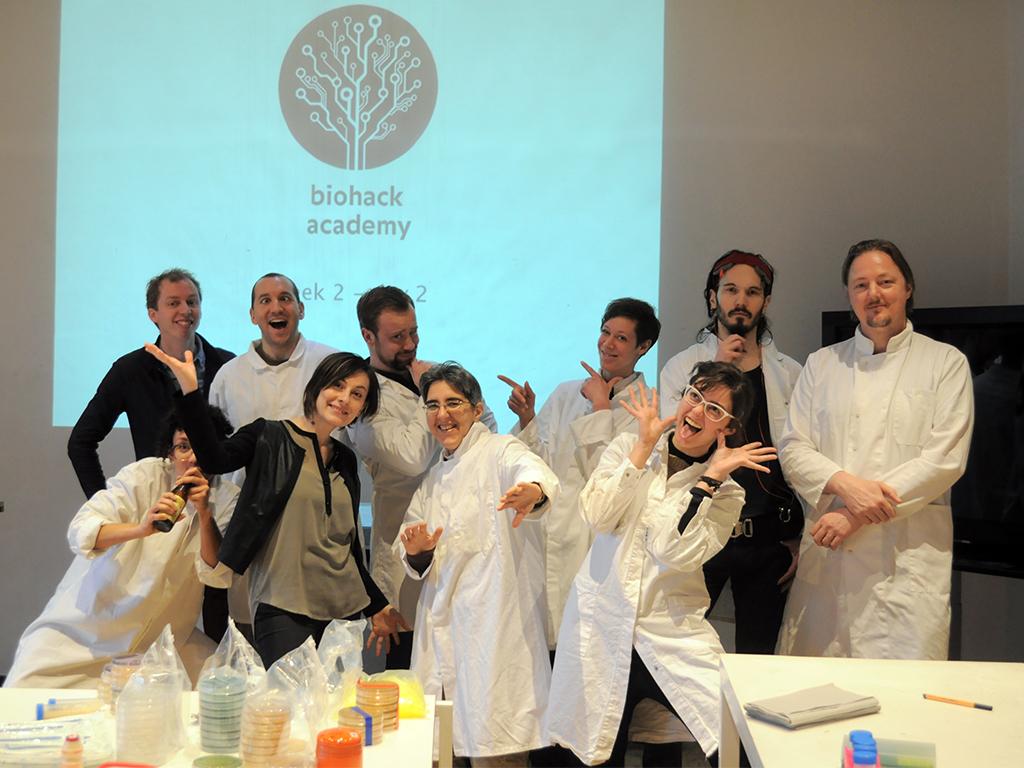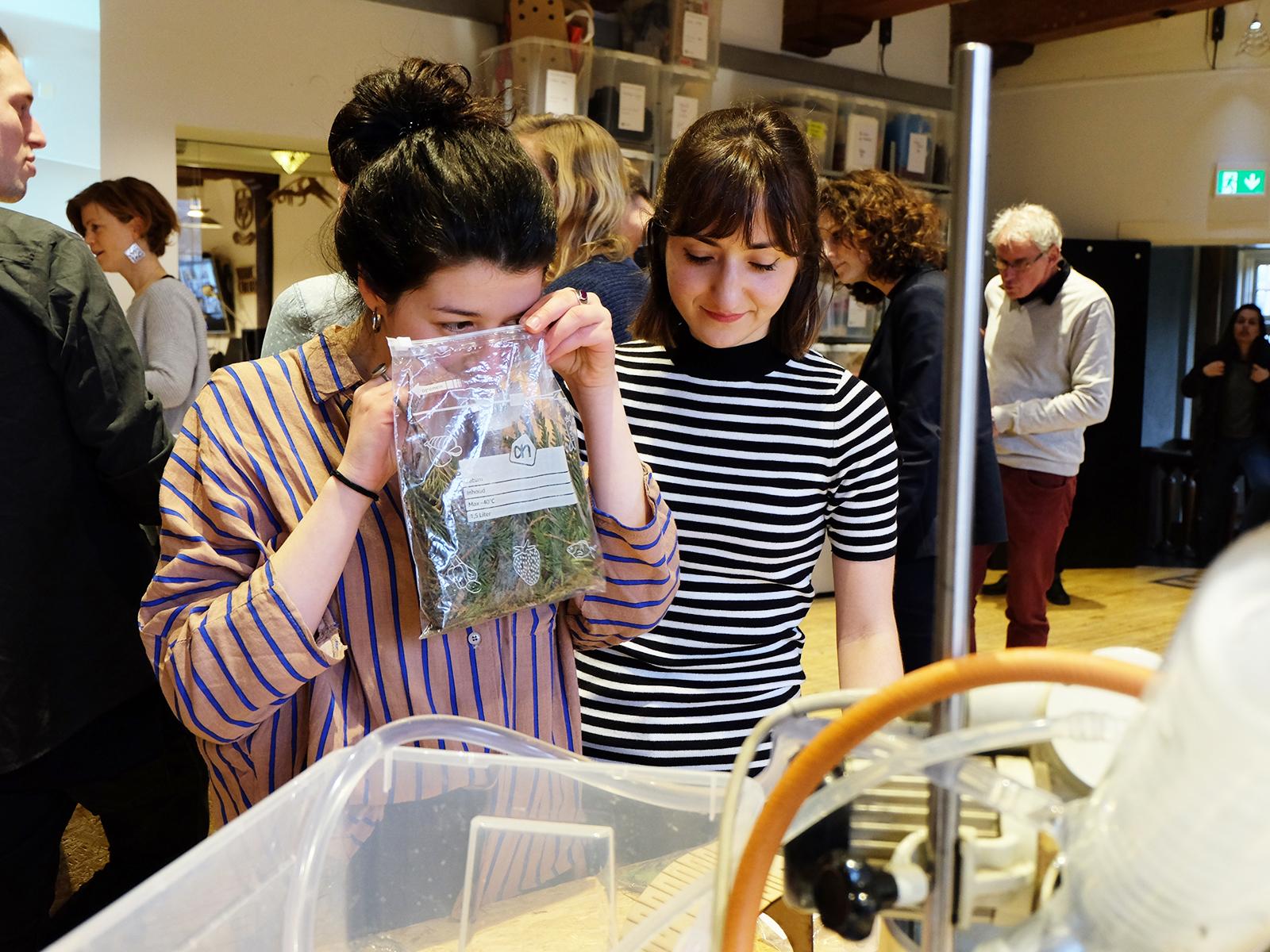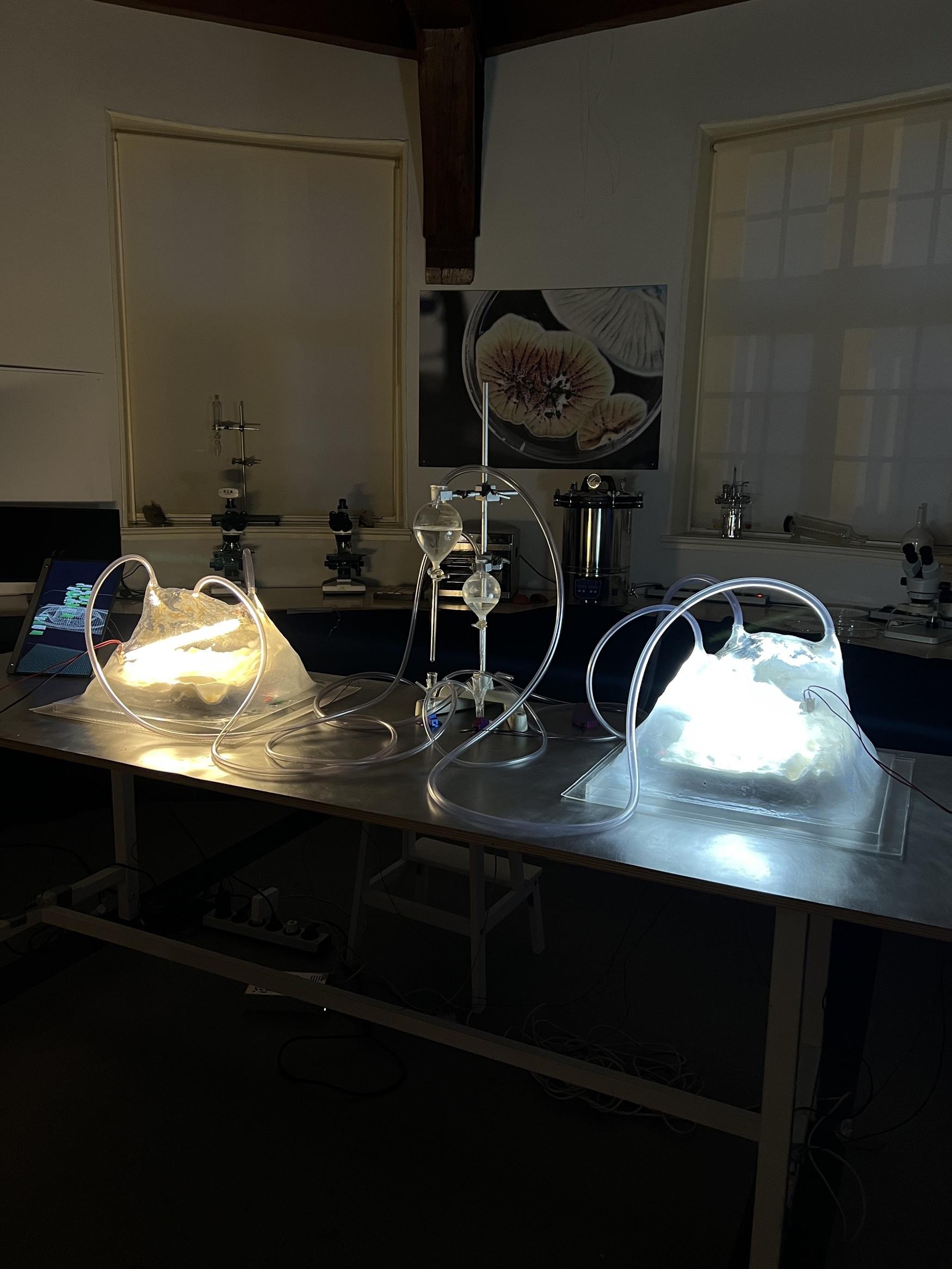Already some weeks ago the fourth edition of the BioHack Academy started. During this international programme, which has been developed by Waag, participants learn how to construct a biolab. Initially, participants learn everything about 3D design and electronics which enables them to construct a large number of lab tools using the laser cutter and 3D printer in the Fablab. Subsequently, the participants perform their personal project though, first they learn how to work safely in the Open Wetlab.
The first day started with an intense discussion on the definition of biohacking. You could see biohacking as ‘bodyhacking’ i.e an improvement of the human body. First you’ll have to understand biology i.e. life whereafter you are able to intervene, hack the processes you want to optimise. Someone else put forward that biohacking is ‘merging technology with biology’: “The addition of technology enables you to control the biology to be able to study biology.”
As a tutor of the BioHack Academy I am pleased that the participants already have their own ideas and visions on the subject. This promises the development of amazing projects.
In parallel to the programme at Waag, partner labs in Tokyo (Japan), Shenzhen China), Seoul (South-Korea), Albuquerque (VS) en Perth (Australia) conduct the same programme. Additionally, there are some individuals in Vilnius (Lithuania) and Kolding (Denmark) that follow the programme completely on their own.
The BioHack Academy lab tools are completely open-source. Therefore, everybody is free to improve or adapt the designs to their needs. From various places nice hacks have already emerged. Ieva from M-lab in Lithuania has made a cool sterile hood. Currently, she is changing the material design from MDF (which is not so waterproof) to a metal. At the University of New Mexico Kaitlin Bryson not only made a sterile hood but a whole sterile room to work with fungi. And it looks nice too. Seriously cool work guys!
Currently, the participants work on acquiring the various lab techniques and building the devices. Next week all BioHackers will present their projects to each other. Im so exited what is happening in the other places around the world!
Furthermore, at the and of March I will attend the Gathering of Open Science Hardware (GOSH). Here people from all over the world will show their latest open source hardware designs. I hope I will get heavily inspired and that I will meet people that want to collaborate in BioHack Academy 5 beginning 2018.


